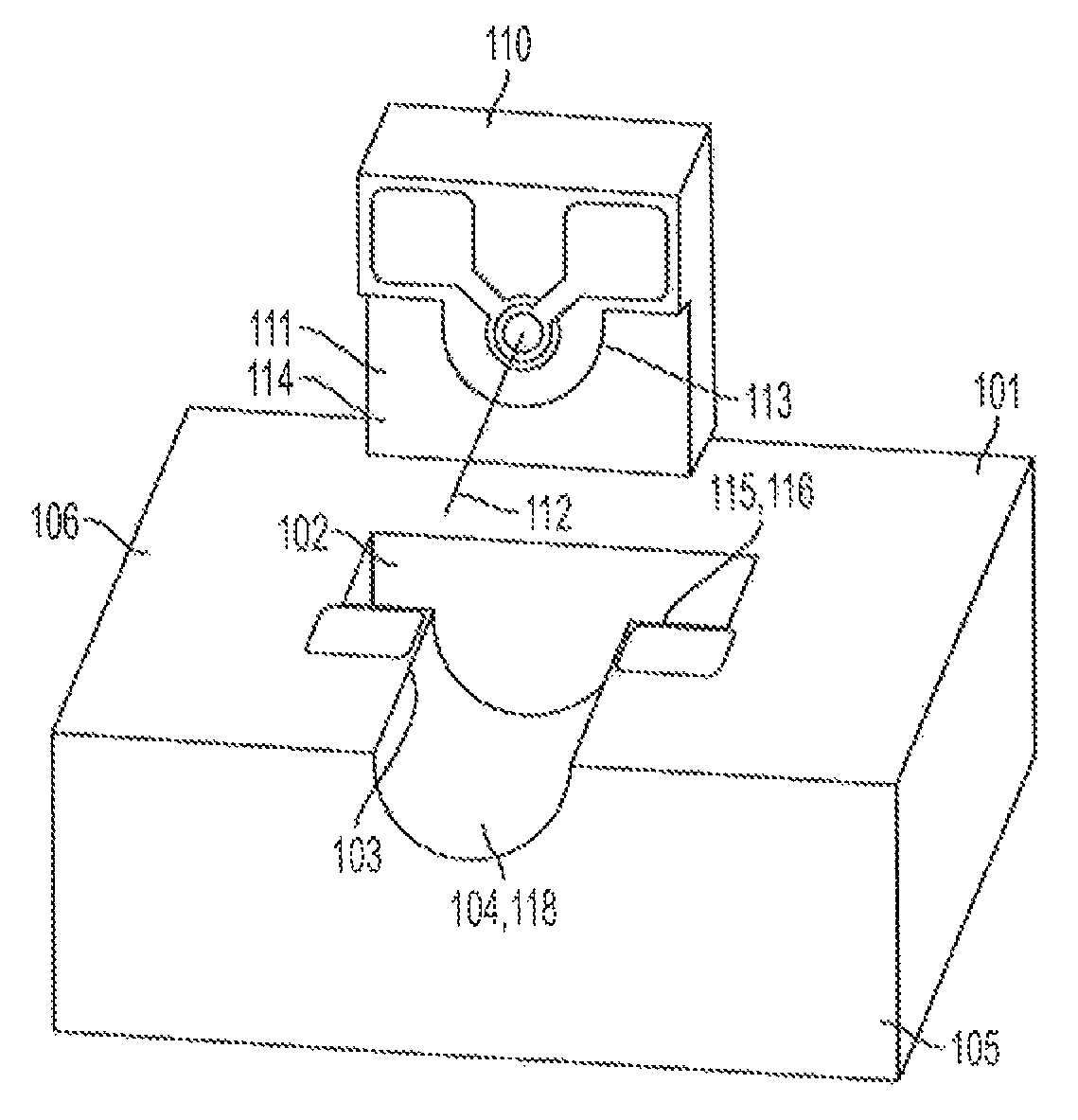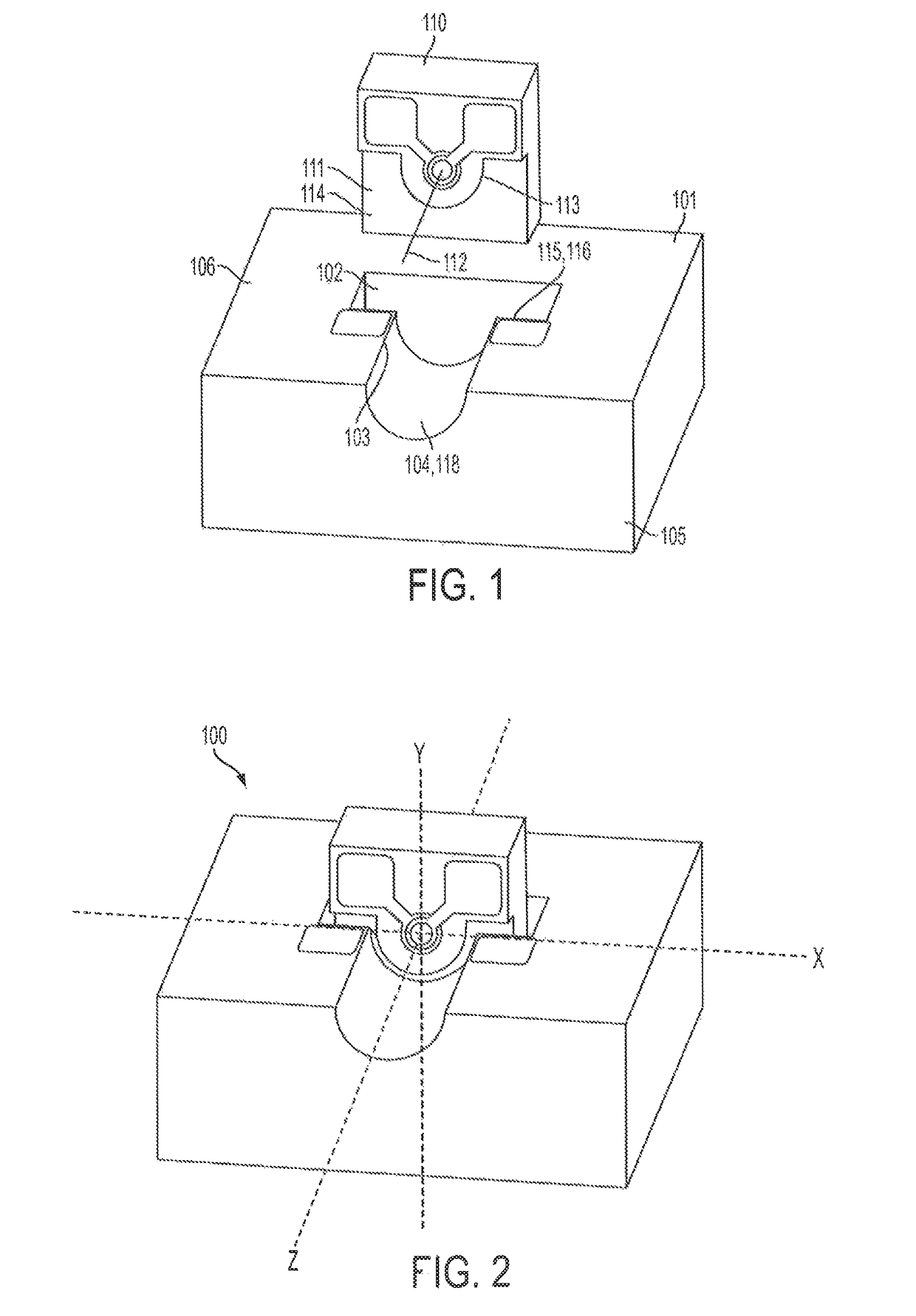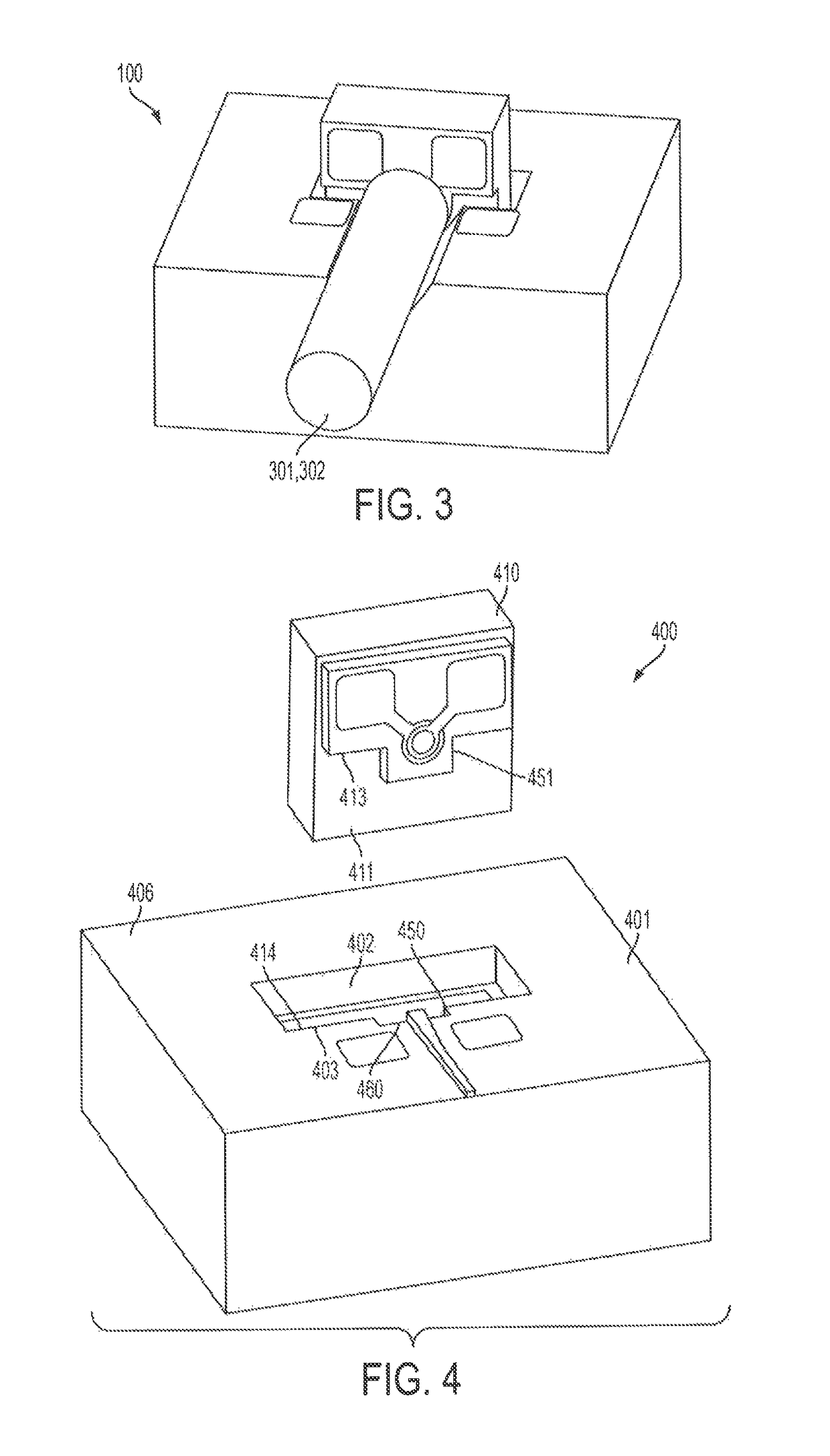Optical assembly with passive alignment
an optoelectric device and assembly technology, applied in the field of optical subassemblies, can solve the problems of not having the required accuracy with respect to the active optical, not being able to mount the oed on the edge, and being difficult to achieve the desired effect, reducing tolerance buildup, and high accuracy
- Summary
- Abstract
- Description
- Claims
- Application Information
AI Technical Summary
Benefits of technology
Problems solved by technology
Method used
Image
Examples
Embodiment Construction
[0017]Referring to FIGS. 1-3, one embodiment of the optical assembly (OA) 100 of the present invention is shown. The OA is described herein in relation to x, y and z axes, although it should be understood that such an orientation is for illustration purposes only and should not be interpreted as limiting the claimed invention. The OA 100 comprises a first substrate 101 having a planar surface 106. The first substrate also comprises a first wall 116, which is perpendicular to the planar surface, and which, in this embodiment, defines a portion of cavity 102 in the planar surface. The first substrate 101 also comprises a first register surface 103 adjacent the first wall, and a foundation 104 for receiving an optical element 301, such as an optical conduit 302 (see FIG. 3), which extends at least partially along the z axis from the first wall 116 to an edge 105 of the substrate. The OA 100 also comprises an opto-electrical device (OED) 110 having a top surface 111 and an optical axis ...
PUM
 Login to View More
Login to View More Abstract
Description
Claims
Application Information
 Login to View More
Login to View More - R&D
- Intellectual Property
- Life Sciences
- Materials
- Tech Scout
- Unparalleled Data Quality
- Higher Quality Content
- 60% Fewer Hallucinations
Browse by: Latest US Patents, China's latest patents, Technical Efficacy Thesaurus, Application Domain, Technology Topic, Popular Technical Reports.
© 2025 PatSnap. All rights reserved.Legal|Privacy policy|Modern Slavery Act Transparency Statement|Sitemap|About US| Contact US: help@patsnap.com



